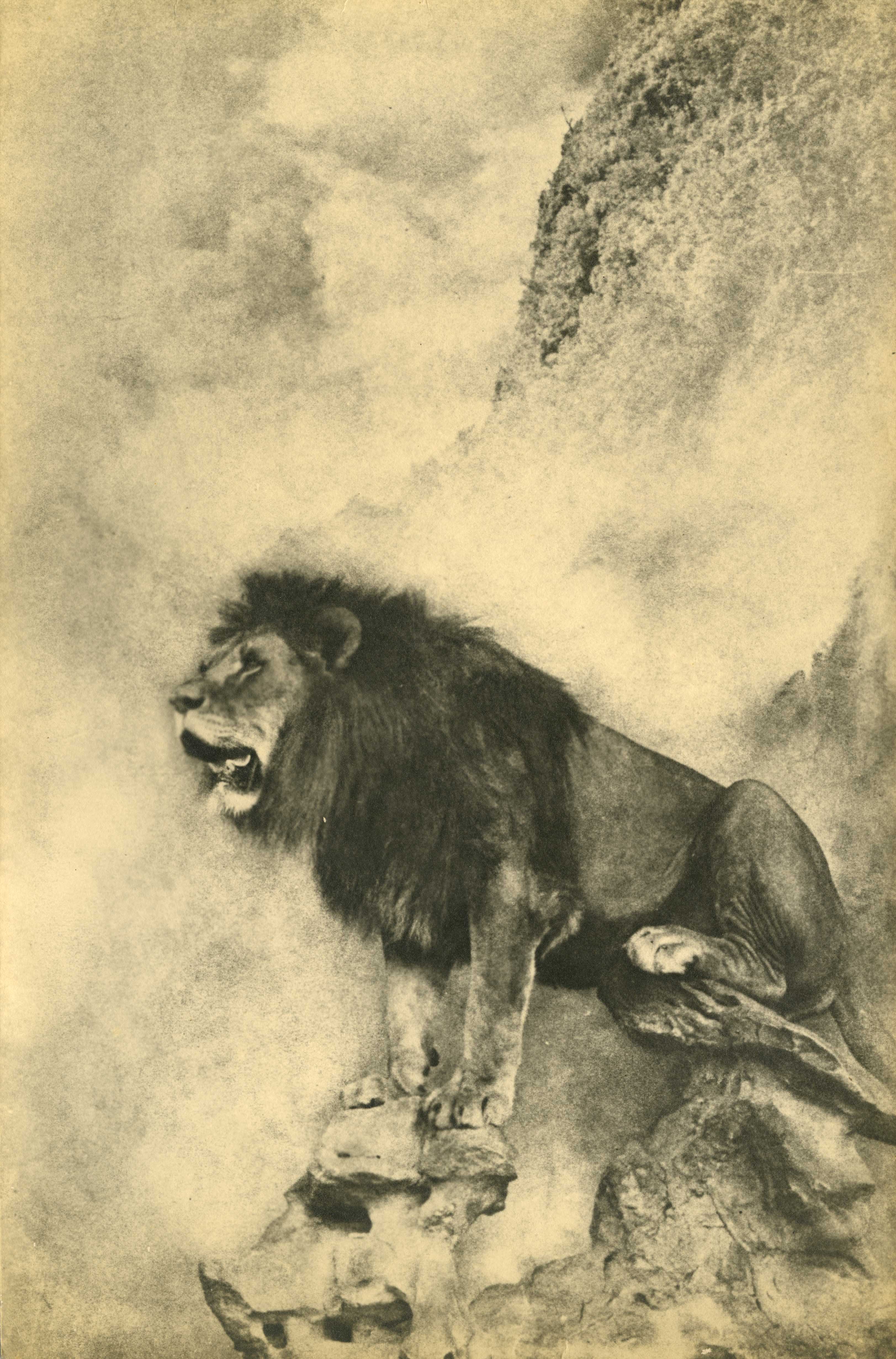
Lang Jingshan
Lion
1930s
Gelatin silver print
Lang Jingshan was born in a family of civil servants at the end of the Qing Dynasty. Influenced by his father’s intellectual ideas and interests, Lang studied painting as a child and excelled in painting landscapes. at age 14, he studied the principles, processing and drying techniques of photography under the professor of Chinese painting, Li Jinglan. Thereafter, his life and works were then inseparable from photography.
The subjects of Lang Jingshan’s photography are diverse. There are natural sceneries, social life, portraits, nudes, and of course his most acclaimed composite photographs. the 1930s was the time when Lang Jingshan expanded these trajectories in his work, also a period when his photography developed from learning and imitation to building an individual style and independent creativity and production method. his realist landscapes of this period emphasized on expressing emotions, and a few numbers on social criticism; the portrait photography absorbed the form of European classical painting while were not limited by existing compositional rules. in the 1930s, Lang Jingshang had photographed a number of female nudes, and had published two volumes on Selection of Nude Photography with Photographers associate Press in 1934, that complied his figurative works since the 1920s.
Since the 1930s, Lang Jingshan has been devoted to composite photographs. The “composite” in which the image is a combined and collaged is unique to Lang Jingshan, who have once stated, “My making of composite photograph aims to use the most real and most literal photography tools, and associate with the existing painting principles in China to create a “beautiful” artwork with “kind” principles and functional values.” The key is, “integrate with existing painting principles in China”, the most apparently characteristic of Lang Jingshan is the formal facsimile to the composition of traditional Chinese painting, that pursues the expression of meaning like in literati painting, in order to explore the national forms of photography. He always believed that,“Chinese art should have the impression and spirit of China.”
Fairyland is an epic work of the maturing composite techniques Lang Jingshan has adopted. the overall composition is concise, simple, the distant mountainous clouds, and mid-range pavilion, and the close-up “Z” shape of the shrouding cloud, the objects and its sceneries are in perfect balance while complimenting each other. In terms of viewing angle, the position reveals the aerial angle that creates rich scenic layers and a deep sense of space. At the bottom left of the image where the cloud are used to make blank space, the writing and stamp, “Fairyland, Jingshan composites”, attributes to the visual impact of Chinese Painting.
(Edited by Su Wenxiang, Xu Chongbao, Huang Si, 2015)

